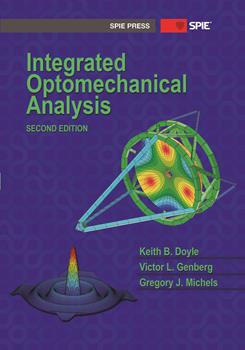|
12.1 Overview Large optical systems such as an orbiting telescope involve several organizations to supply the spacecraft, the metering structure, the primary mirror, the remaining optics, and the science instruments. Each component must be analyzed individually, in various subassemblies, and in a full-assembly analysis of launch and orbiting configurations. In FEA, superelements (SEs) can be used to represent each component and subassembly in an efficient analysis approach. Superelements provide an easy method to swap component models into and out of system-level models to account for local design changes and modeling updates. Superelements also allow organizations to protect proprietary information within a component model. 12.2 Superelement Theory Superelement is another name applied to substructure analysis. A component FE model with many degrees of freedom (DOF) is partially solved and reduced to a much smaller matrix representation involving boundary (or connection) DOF and some number of internal DOF. Superelements can be treated just like any other finite element with a mass and stiffness matrix. They can be assembled with other SE or standard finite elements to build a system level matrix (called the residual structure), which is then solved. In Fig. 12.1 the SE are arranged in a tree structure. The process order starts at the tips of the tree, working downward to the base of the tree called the residual structure. When the residual structure is solved, the analysis works back up the tree to recover results internal to the SEs. |
|
|


